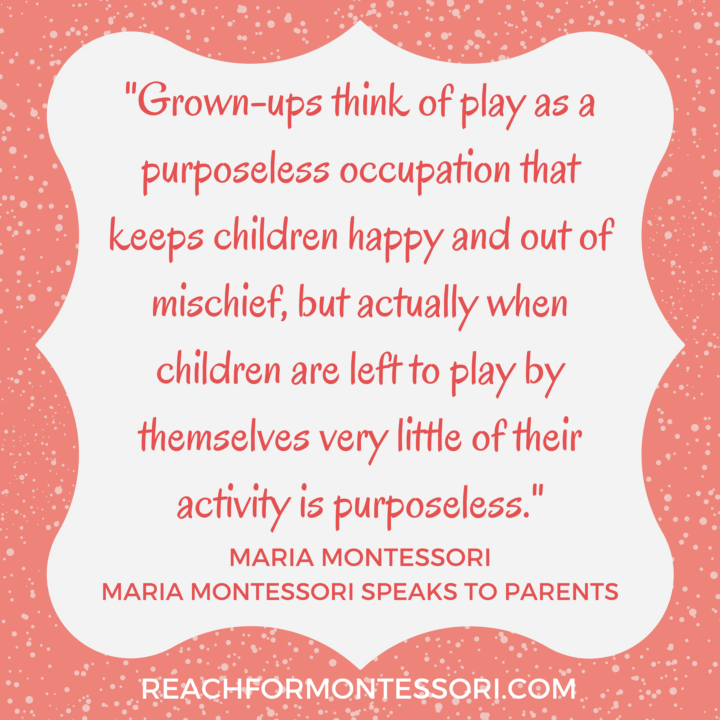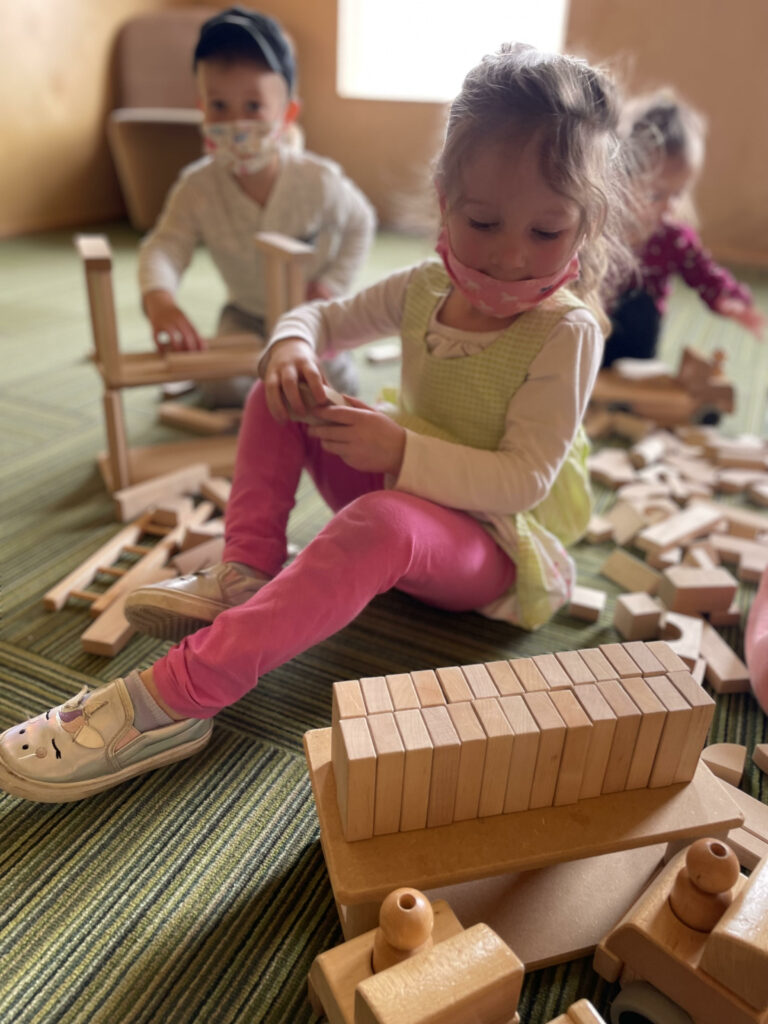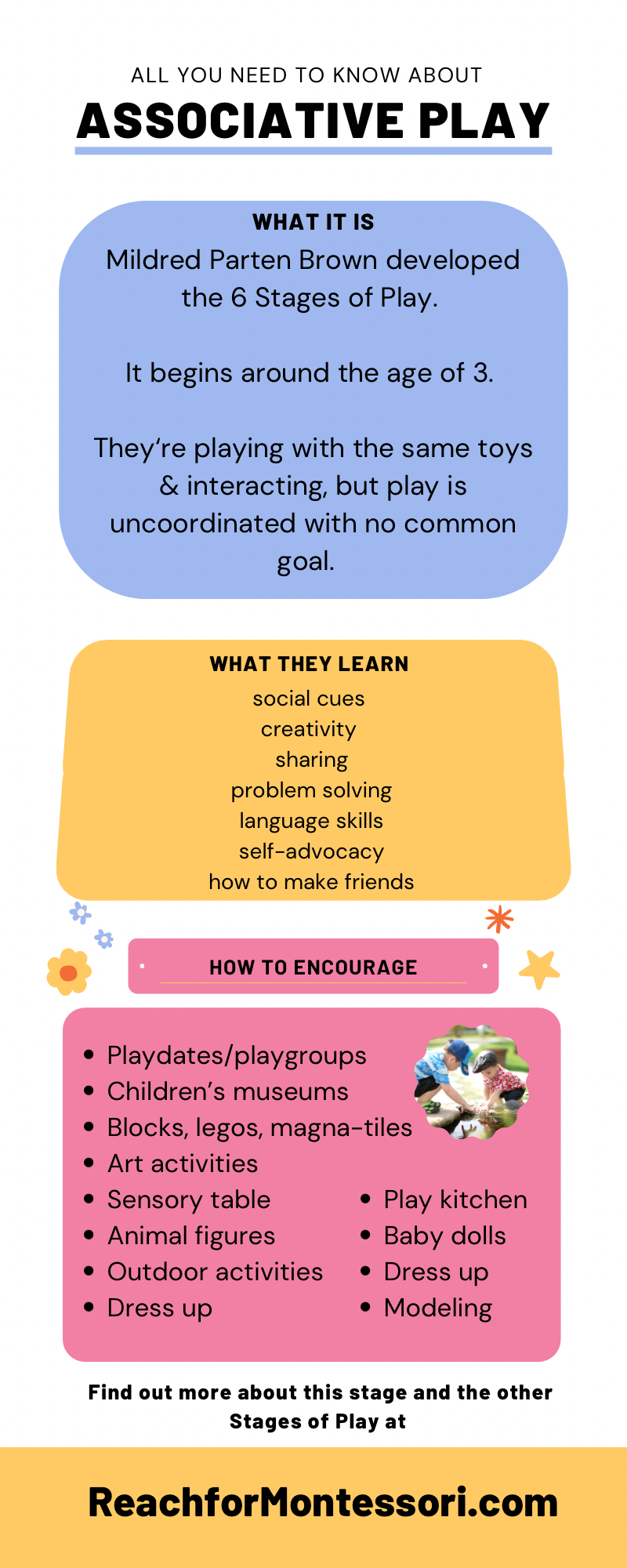In this article, you will learn all about the developmental stage of play called Associative Play. You will learn what it is, at what age it occurs, and you will get some ideas on how to support this type of play in your child.
If you think your toddler or preschooler may be missing out on educational opportunities because they are “just playing,” think again.
In a study of 6-7-year-olds by the Universities of Colorado and Denver, it was determined that “children who spent more time in less-structured activities demonstrated better self-directed executive function.”
You can read that study here.
Executive functions are mental skills required for self-control, multi-tasking, memory, emotional regulation, planning/organizing, and adaptability.
These skills affect academic performance and behavior, as well as success as an adult.
Another word for “less-structured activities?” Play. Free play, or child-led play, encourages executive functioning development.
Having an understanding of the stages of play will help you foster the constant learning that occurs during your child's play.
In this article, we will discuss the 5th stage of play: Associative play.

What is Associative Play?
Associative play is one of the 6 Stages of Play developed by sociologist, Dr. Mildred Parten Newhall.
The other 5 stages of play are (click on links for details on each stage):
- Unoccupied play
- Independent play
- Spectator/Onlooker Play
- Parallel play
- Cooperative play
Read more about the 6 stages of play here.
Associative play usually begins around the age of 3. During this stage of play, children are engaging in the same activity, but their play is unorganized and has no common goal.
This stage looks a lot like parallel play, but during associative play, they are interacting with each other, whereas in parallel play they are not.
During this stage, they are sharing toys, but their play will be uncoordinated.

Associative Play Examples:
Example 1
My daughter was playing with bristle blocks with a friend (both 3), and they were talking to each other, saying what they were doing, and sharing the pieces.
My daughter was building a house, while her friend was scooping them up with a bulldozer and putting them in a dump truck.
Example 2
My daughters and their cousin were at a children's museum in the wooden block area.
They each began building things separately; my older daughter was lining up blocks, and her cousin was building a tower.
They would talk to each other, telling the other what they were doing, building right next to each other.
But they were not building the same structure together.
Why is Associative Play Important?
This is an exciting stage as their world is expanding! They are becoming less egocentric and are starting to really make friends.
During this stage they learn:
- Sharing/taking turns
- Social cues
- Language
- Creativity
- Problem-solving
- Self-advocacy
- How to make friends
Activities to Support Associative Play
Playgroups
Find some local playgroups to expose them to different children who may be at different stages of play.
Playdates
Smaller one-on-one playdates with friends they're already comfortable with will encourage them to really interact during play.
Indoor play places or children's museums
These are both environments that provide exposure to new kids and play scenarios. They are also a great neutral place to practice sharing.
Tower building
This encourages interaction and sharing but doesn't force cooperative play if they're not quite ready. You can get out building supplies and prompt them to start a tower and then step back.
Modeling
As always, modeling communication, listening, and sharing while playing with your child will help them understand how to respectfully interact and share with others.
Outdoor activities
Go on group nature walks or group bike rides. Read more about Maria Montessori's belief that outdoor play is crucial in a child's development here.
Sensory activities
Activities such as playdough, sand, or water are fun activities to do side by side. Check out our list of water tables here.
Arts & Crafts
Creating a group project will encourage interaction between children, or just set out a mix of supplies and let them create side by side.

Toys to Support Associative Play
Just as in most stages of play, open-ended toys and pretend play are ideal to encourage associative play.
Most of the toys we suggest for parallel play are the same, as you may find that they seamlessly go from parallel play to associative play during these activities.
Building toys
Wooden building blocks, legos or Magna-tiles all are perfect for many stages of play. Building toys are great for parallel play all the way through to cooperative play.
It's a great open-ended activity that encourages fine motor skill development, spatial awareness, creativity, and problem-solving.
Dress-up
Any kind of pretend play can encourage associative play. Dress-up allows for children to begin role-playing and really helps their imagination grow.
Play kitchen
Children can have two separate goals (i.e., cooking a meal, washing dishes, cutting food) but be right next to each other talking during their play.
Check out our list of play food to go with your kitchen here.
Animal figures
Animal figures are a great open-ended toy that interests children of many different ages.
Baby dolls
Baby dolls are not just for girls! Playing with baby dolls helps develop social and emotional skills, such as empathy and communication, as well as fine motor and self-help skills.
Craft supplies
Anything from markers and crayons to googly eyes and paint! Let children get creative together. Here‘s our list of 100 must-have art supplies!
Associative play is a really exciting time; you will start seeing your child truly make friends. Before you know it, you will start seeing them enter the next stage: cooperative play!
Don't worry if they begin associative play, but also sometimes still parallel or solitary play. It is perfectly normal for children to continue different stages of play throughout their childhood.
Remember, every child develops at their own pace, and some are more reluctant to join in, and that is okay too. Allow your child space, time, and support to flourish!
